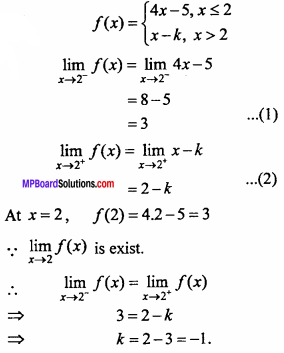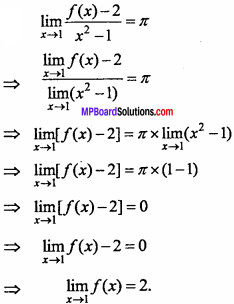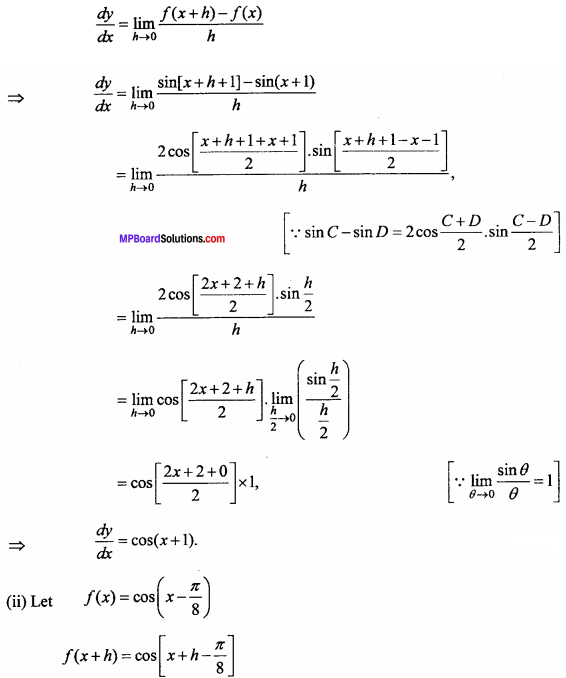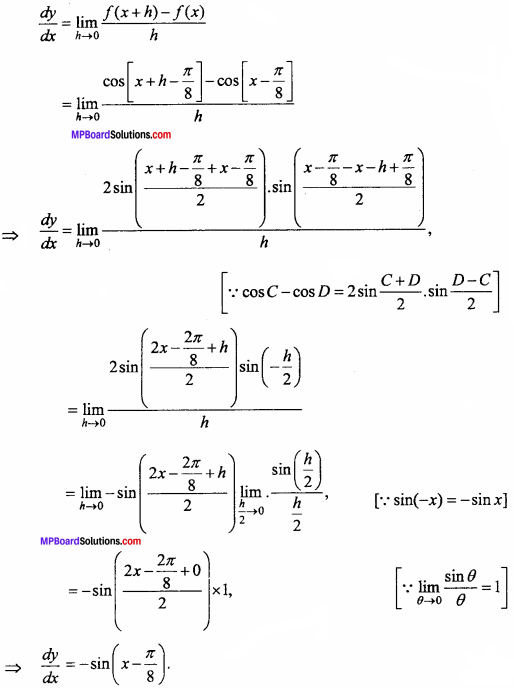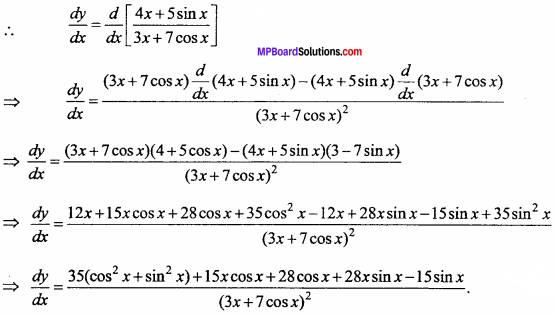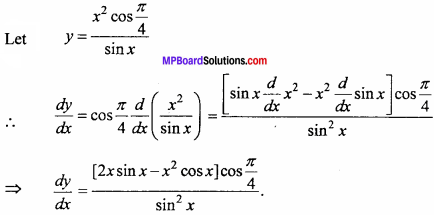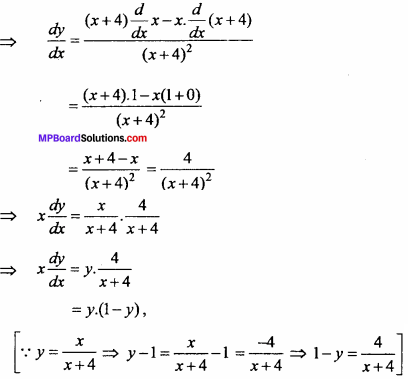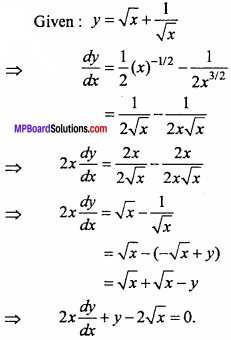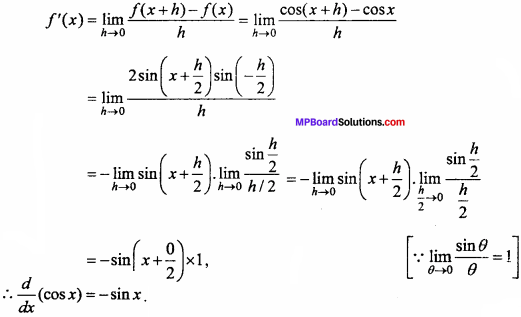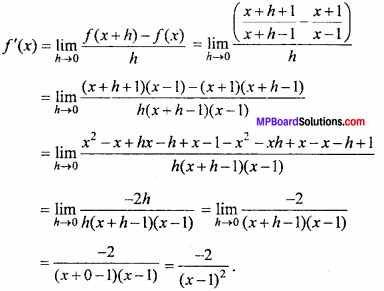Students who are studying 11th can get the free Madhya Pradesh Board Solutions for 11th English Chapter 17 A Grain as Big as a Hen’s Egg Questions and Answers PDF here. You can download MP Board Class 11th English Solutions Questions and Answers PDF on this page. Practice questions of Mp Board Solutions of 11th English subject as many times as possible to get good marks.
MP Board Class 11th English The Spectrum Solutions Chapter 17 A Grain as Big as a Hen’s Egg
Gather chapter wise MP Board Solutions for 11th English Study Material to score the highest marks in the final exam. Various chapters and subtopics are given clearly in MP Board Class 11th English Solutions Chapter 17 A Grain as Big as a Hen’s Egg Questions and Answers Material. All the MP Board Solutions for 11th English Questions with detailed answers are provided by subject experts. The step by step MP Board Class 11th English Chapter 17 A Grain as Big as a Hen’s Egg Questions and Answers guide will help you to enhance your skills in English subject and The Spectrum Solutions. Here, along with the subject knowledge, The Spectrum Solutions knowledge also plays an important role. So, students should download MP Board Solutions 11th English and read it to attempt all the questions with 100% confidence.
A Grain as Big as a Hen’s Egg Textual Questions and Answers
Word Power
A. Here is a word map, a variation on the bubble network. Find out words in the story related to “farm’ that can go in this diagram. One arm of the diagram has been completed as an example.
नेटवर्क का एक बदला हुआ रूप। कहानी में से ‘farm’ से सम्बन्धित शब्द ढूँढ़ो जो इस नक्शे में जा सकते हों। चित्र की एक भुजा भरी गई है।
Answer:
- farmer, field, plough
- com, grain, peasant
- sow, reap, thrash.
B. From these jumbled words find combinations for describing people as in the example. Use dictionary if necessary.
शब्दों के इस अव्यवस्थित समूह में से ऐस संयोजन ढूंढिए जो व्यक्तियों के वर्णन के लिए प्रयुक्त हो सकते हो। आवश्यकता हो तो शब्दकोश का उपयोग करें।।
Answer:
well dressed, middle aged, over weight, tanned complexion, stocky build, red faced, long haired, round legged, mixed race.
Comprehension
Answer the following questions in one or two sentences each.
इन प्रश्नों का उत्तर एक या दो वाक्यों में दीजिए।
Question 1.
Describe the object that the children picked up from the ravine. (2009, 10, 15)
कन्दरा में से बच्चों ने जो चीज उठाई थी उसका वर्णन कीजिए।
Answer:
The children picked up a thing shaped like a corn, with a groove down the middle. It was as large as a hen’s egg.
बच्चों ने गेहूँ के दाने जैसी एक चीज उठाई थी जिसमें बीच में एक खाँचा था। वह मुर्गी के अण्डे जितनी बड़ी थी।
Question 2.
Where did the learned men look for the answer to where the corn had grown? (2013)
विद्वानों ने वैसा गेहूँ कहाँ पैदा हुआ था यह जानने के लिए कहाँ खोज की ?
Answer:
The learned men searched in their books for it.
इसके लिए विद्वानों ने अपनी किताबों में खोजा।
Question 3.
What did they suggest the king should do when they failed to find the answer ?
जब वे उसका उत्तर नहीं खोज पाए तो उन्होंने राजा को क्या करने का सुझाव दिया ?
Answer:
They suggested that the king should ask the peasants about it.
उन्होंने राजा को सुझाव दिया कि वह किसानों से उसके बारे में पूछे।
Question 4.
How was the peasant’s father different from his son ?
किसान का पिता अपने बेटे से किस रूप में अलग था ?
Answer:
He came walking with only one crutch and was still able to see. Though he was rather hard of hearing but could hear better than his son.
वह एक बैसाखी के सहारे चलकर आया और देखने में भी समर्थ था। हालाँकि वह थोड़ा कम सुनता था पर अपने बेटे से अच्छा सुन सकता था।
Question 5.
When money was not in use, people exchanged commodities. What is this system called ?
जब मुद्रा का चलन नहीं था तो लोग वस्तुओं की अदला-बदली करते थे। इस प्रणाली को क्या कहा जाता है ?
Answer:
It is called barter system. इसे वस्तु विनिमय प्रणाली कहा जाता है।
Question 6.
What did the peasant’s grandfather do with the grain ? (2014)
किसान के दादा ने उस दाने का क्या किया ?
Answer:
He looked at it and turned it about in his hand. He also bit a piece of it and tasted it.
उसने उस दाने को देखा और हाथ में लेकर इधर-उधर किया। उसने उसमें से थोड़ा-सा टुकड़ा काटा और उसका स्वाद लिया।
Question 7.
Where did people grow corn in the days of the peasant’s grandfather? (2016)
किसान के दादा के समय में लोग अनाज कहाँ पैदा करते थे?
Answer:
They grew com wherever they wanted because land belonged to nobody.
वे जहाँ चाहते थे वहाँ अनाज पैदा करते थे क्योंकि जमीन किसी की नहीं होती थी।
B. Answer these questions in three or four sentences each.
इन प्रश्नों का उत्तर तीन या चार वाक्यों में दीजिए।
Question 1.
How did the wise men come to know that the object was a grain of corn ? (2009)
ज्ञानी लोगों को यह कैसे पता चला कि वह वस्तु गेहूँ का एक दाना थी ?
Answer:
One day it was lying on a window-sill. A hen flew in and pecked at it till she made a hole in it. It was then that the wise men realised that it was a grain of com.
एक दिन वह वस्तु खिड़की में पड़ी थी। एक मुर्गी आई और उस पर अपनी चोंच मारना शुरू कर दिया तथा उसमें एक छेद कर दिया। तब ज्ञानी व्यक्तियों की समझ में आया कि वह गेहूँ का एक दाना था।
Question 2.
Describe the first peasant. पहले किसान का वर्णन कीजिए।
Answer:
He was old and bent. He had no teeth and could just manage to totter with the help of two crutches. He was nearly deaf.
वह बूढ़ा और झुका हुआ था। उसके दाँत महीं थे और वह दो बैसाखियों के सहारे लड़खड़ाकर चल पाता था। वह करीब-करीब बहरा था।
Question 3.
What did the peasant say about the grain ? (2009) किसान ने दाने के बारे में क्या कहा ?
Answer:
He said he never sowed nor reaped any grain like that. He added that he never bought such grain. He also said that the king could ask his father about it.
उसने कहा कि इस प्रकार के दाने न तो उसने कभी बोए और न कभी काटे। उसने कहा कि ऐसे दाने उसने कभी नहीं खरीदे। उसने यह भी कहा कि राजा इसके बारे में उसके पिता से पूछ सकता है।
Question 4.
What did the peasant’s father say about the grain ? (2008)
किसान के पिता ने उस दाने के बारे में क्या कहा ?
Answer:
He said he never sowed nor reaped any grain like that. As for buying, he never bought anything because in his days money was not in use. He said in his days the grains were larger but not as large at this one. He also said that he heard his father say that in his days the grains were larger than our grains.
उसने कहा कि उसके जैसे दाने न उसने कभी बोए और न कभी काटे। जहाँ तक खरीदने का प्रश्न है उसने कभी कोई चीज नहीं खरीदी क्योंकि उनके समय में मुद्रा का चलन नहीं था। उसने कहा कि उसके समय के दाने आजकल के दानों से बड़े तो होते थे पर उस दाने के समान नहीं। उसने कहा कि उसने अपने पिता से सुना है कि उनके समय में दाने हमारे दानों से भी बड़े होते थे।
Question 5.
How did the peasant’s grandfather respond when asked if he ever bought such a grain ?
जब किसान के दादा से पूछा गया कि क्या उसने कभी इस प्रकार के दाने खरीदे थे तो उसने क्या प्रतिक्रिया दी?
Answer:
He said that in his days buying or selling corn was thought to be a sin. They knew nothing about money. Each man had corn enough of his own.
उसने कहा कि उसके समय में अनाज बेचना और खरीदना पाप माना जाता था। उन्हें मुद्रा की कोई जानकारी नहीं थी। हर व्यक्ति के पास अपनी आवश्यकता के लिए काफी अनाज होता था।
Question 6.
Why has the earth ceased to grow grains of that size ? (2008)
उतने बड़े दाने पैदा करना पृथ्वी ने क्यों बन्द कर दिया है ?
Answer:
The earth has stopped doing so because men have ceased to live by their own labour. They have started living on other’s labour. In those days men lived according to God’s law but now they have stopped doing so.
पृथ्वी ने ऐसा करना इसलिए बन्द कर दिया है क्योंकि मनुष्यों ने अपनी मेहनत पर जीना बन्द कर दिया है। उन्होंने दूसरों के श्रम पर जीना शुरू कर दिया है। उन दिनों मनुष्य ईश्वर के कानून के अनुसार चलता था जो अब उसने बन्द कर दिया था।
Question 7.
Why was the grandfather healthier than both his son and his grandson ?
दादाजी अपने पुत्र तथा अपने पोते से तन्दुरुस्त क्यों थे ?
Answer:
He lived on his own labour. He also lived according to the laws of God. He had what belonged to him and never desired what belonged to others. This was the reason for his being healthier than both his son and his grandson.
वह अपने श्रम पर जीवित रहता था। साथ ही वह ईश्वर के नियमों के अनुसार जीवन-यापन करता था। उसके पास वही था जो उसका अपना था, जो दूसरों का था उसकी उसने कभी चाह नहीं की। यही कारण था कि वह अपने पुत्र तथा अपने पोते से अधिक तन्दुरुस्त था।
Language Practice
|इस खण्ड के मूल प्रश्न व तालिकाएं अपनी पाठ्य-पुस्तक में से देखिए। यहाँ केवल इनके उत्तर दिय जा रहे हैं।
A Complete the conversation. Put in who, which or that.
वार्तालाप पूर्ण करो। who, which या that भरो।
Answer:
which, who, who, that, which, who. B. Pick out the Adjective Clauses in the following sentences and tell what noun or pronoun each one qualifies.
निम्नलिखित वाक्यों में से Adjective Clauses छाँटिए तथा वह संज्ञा या सर्वनाम बताइये जिसे वह qualify करता है।
Answer:
- Adjective Clause—which goes in and out with me.
Qualifies a little shadow. - Adjective Clause–that sounds untrue.
Qualifies-a tale. - Adjective Clause-who help themselves.
Qualifies those. - Adjective Clause where I was born.
Qualifies the house. - Adjective Clause we enjoy.
Qualifies–All the blessings - Adjective Clause who laughs last.
Qualifies-He. - Adjective Clause—who watched the match.
Qualifies—Nobody.
A Grain as Big as a Hen’s Egg Summary in Hindi
एक दिन कुछ बच्चों को एक कन्दरा में गेहूँ के दाने के समान एक चीज मिली जिसमें बीच में खाँचा था लेकिन वह इतनी बड़ी थी जितना एक मुर्गी का अण्डा। एक यात्री जो उधर से गुजर रहा था उसने उसे देखा और एक पेनी में बच्चों से उसे खरीद लिया तथा शहर में लाकर राजा को एक जिज्ञासा की वस्तु के रूप में बेच दिया। राजा ने अपने ज्ञानी लोगों को बुलाया और उनसे यह जानने को कहा कि वह वस्तु क्या है। ज्ञानी लोगों ने आपस में बहुत सोच-विचार किया पर उनकी समझ में कुछ नहीं आया। अचानक एक दिन, जब वह चीज खिड़की पर रखी थी, एक मुर्गी आई और उसने उस पर चोंच मारना शुरू किया और उसमें एक छेद कर दिया। तब सबको अन्दाज लगा कि वह तो गेहूँ का एक दाना है।
ज्ञानी लोग राजा के पास गये और उनसे कहा, “यह गेहूँ का दाना है।”यह सुनकर राजा आश्चर्यचकित रह गया। उसने बुद्धिजीवियों को बुलाया और यह पता लगाने के लिए कहा कि ऐसा गेहूँ कब और कहाँ पैदा होता था। बुद्धिजीवियों ने काफी विचार-विमर्श किया, अपनी किताब में ढूँढ़ा पर उन्हें कुछ पता नहीं चला तब वे लोग राजा के पास गये और कहा, “हम आपको कोई उत्तर नहीं दे सकते। इसके बारे में हमारी किताबों में कुछ नहीं मिलता। आपको किसानों से पूछना चाहिए; शायद उनमें से कुछ ने अपने बुजुर्गों से सुना हो कि कब और कहाँ ऐसा गेहूँ होता था।”
तब राजा ने आदेश दिया कि कुछ बुजुर्ग किसान लाए जाएँ और उसके कर्मचारियों को एक ऐसा व्यक्ति मिला तथा वे उसे राजा के पास लाए। वह बहुत बूढ़ा था, उसबै? कमर झुकी हुई थी, उसका रंग हल्का राख समान था और उसके मुहँ में एक भी दाँत नहीं था। वह किसी प्रकार बैसाखियों के सहारे लड़खड़ाते हुए राजा के सामने आया। राजा ने उसे गेहूँ का दाना दिखाया पर वह बड़ी मुश्किल से उसे देख पाया। उसने उस दाने को अपने हाथ में लिया और छूकर देखा। राजा ने उससे पूछा, “ बुजुर्ग आदमी, क्या तुम बता सकते हो कि ऐसा गेहूँ कहाँ पैदा होता था ? क्या तुमने कभी ऐसा गेहूं खरीदा या अपने खेते में बोया ?” वह इतना बहरा था कि बड़ी मुश्किल से सुन पाया कि राजा ने क्या कहा और उसे समझ पाने में भी काफी कठिनाई हुई।
“नहीं !” उसने उत्तर दिया, “मैंने अपने खेतों में न तो ऐसा गेहूँ कभी बोया और न काटा, मैंने ऐसा गेहूँ कभी खरीदा भी नहीं। जबसे हमने गेहूँ खरीदा उसके दाने इतने ही छोटे थे जितने आज हैं। लेकिन आप मेरे पिता से पूछ सकते हैं, हो सकता है उन्होंने ऐसे गेहूँ के बारे में कुछ सुना हो।” अतः राजा ने बुजुर्ग व्यक्ति के पिता को बुलवाया। उसे ढूँढकर राजा के सामने लाया गया। वह एक बैसाखी के सहारे चलता हुआ आया। राजा ने उसे गेहूँ का दाना दिखाया और उस बूढ़े किसान ने जो अब भी देख सकता था, उसको भली प्रकार देखा। तब राजा ने उससे पूछा, “बुजुर्ग आदमी, क्या तुम मुझे बता सकते हो कि ऐसा गेहूँ कहाँ पैदा होता था ? क्या तुमने ऐसा गेहूँ कभी खरीदा या अपने खेत में बोया ?”
हालाँकि उस बूढ़े आदमी को कुछ न सुनाई देता था पर राजा ने जो कहा उसे वह अपने बेटे से ज्यादा अच्छी तरह सुन सका। “नहीं । उसने कहाँ,” मैंने अपने खेत में ऐसा गेहूँ न कभी बोया न कभी काटा। जहाँ तक खरीदने का सवाल है, मैंने ऐसा गेहूँ कभी नहीं खरीदा क्योंकि हमारे समय में मुद्रा का चलन नहीं था। हर व्यक्ति अपना अनाज पैदा करता था और यदि कोभी आवश्यकता होती थी तो हम लोग आपस में बाँट लेते थे। मैं नहीं जानता कि ऐसा गेहूँ कहाँ पैदा होता था। हमारा गेहूँ आजकल मिलने वाले गेहूँ से बड़ा होता था और उससे ज्यादा आटा मिलता था, लेकिन इतना बड़ा मैंने कभी नहीं देखा। हाँ, मेरे पिता कहते हैं कि उनके समय का गेहूँ हमारे गेहूँ से ज्यादा बड़ा होता था और उससे ज्यादा आटा मिलता था। अच्छा हो कि आप उनसे पूछ।
अतः राजा ने इस बूढ़े व्यक्ति के पिता को बुलवाया और उसे लाया गया। वह आसानी से, बिना बैसाखी के, चलता हुआ आया। उसकी आँखें साफ थीं और श्रवण शक्ति भी ठीक थी तथा वह ठीक से बोल भी रहा था। राजा ने गेहूँ का दाना उसे दिखाया। बूढ़े दादा ने उसे देखा और हाथ में लेकर स्पर्श भी किया। “बहुत अरसे के बाद मैं इतना अच्छा गेहूँ देख रहा हूँ” उसने कहा और उसमें से थोड़ा -सा काटकर स्वाद लिया। “यह तो वैसा ही है”, उसने कहा। “दादाजी, मुझे बताइए” राजा ने कहा, “कब और कहाँ ऐसा गेहूँ पैदा होता था ? क्या इस प्रकार के गेहूँ को अपने कभी खरीदा या अपने खेतों में बोया था ?” “हमारे समय में इस प्रकार का गेहूँ सब जगह पैदा होता था। ऐसा ही गेहूँ हमने अपनी जवानी में खाया और दूसरों का खिलाया था। इस प्रकार का गेहूँ ही हम लोग बोते थे, काटते थे और गहाई करते थे।” तब राजा ने पूछा, “दादाजी, मुझे बताइए क्या आपने ऐसा गेहूँ खरीदा भी था या आप स्वयं ही पैदा करते थे ?”
“मेरे समय में”, उसने उत्तर दिया, “रोटी खरीदने या बेचने जैसे आप के बारे में किसी ने कभी विचार ही नहीं किया। हमें मुद्रा की कोई जानकारी नहीं थी। हर इन्सान के पास अपनी आवश्यकता के लायक अपना ही अनाज होता था। “दादाजी, मुझे बताइए”, राजा ने पूछा, “आपका खेत कहाँ था ? आप ऐसा अनाज कहाँ पैदा करते थे ? और दादाजी ने उत्तर दिया, “मेरा खेत ईश्वर की पृथ्वी थी। जहाँ कहीं मैं हल चलाता वही मेरा खेत होता था। भूमि पर किसी का अधिकार नहीं था। वह एक ऐसी चीज थी जिसे कोई भी अपनी नहीं कहता था। मेहनत ही वह चीज थी जिसे व्यक्ति अपनी कहता था।” ___ “मेरे दो प्रश्नों का उत्तर और दीजिए”, राजा ने कहा, “पहला पृथ्वी तब क्यों ऐसा अनाज पैदा करती थी और अब क्यों नहीं ? और दूसरा, आपका पोता दो बैसाखियों के सहारे चलता है, आपका बेटा एक के और आप बिना बैसाखियों के चलते हैं? आपकी आँखों में चमक है, आपके दाँत मजबूत हैं और आपकी आवाज स्पष्ट है और कानों को मधुर लगती है। यह सब क्यों हो गया ?”
और उस बूढ़े व्यक्ति ने उत्तर दिया, “यह सब इसलिए हो गया क्योंकि मनुष्य ने अपनी मेहनत पर जीना बन्द कर दिया और दूसरों की मेहनत पर निर्भर रहने लगा। पुराने समय में मनुष्य ईश्वर के नियमों के अनुसार जीता था। जो उसका अपना था उसी से सन्तुष्ट रहता था, जो दूसरों का होता था उसकी लालसा नहीं करता था।” -लीओ टॉलस्टॉय
A Grain as Big as a Hen’s Egg Meanings of Difficult Words

Above provided complete MP Board Solutions 11th English Study guide is useful for making your preparation effective. Students can frequently visit our page to get the latest updates on other subjects study materials.






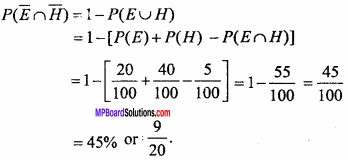

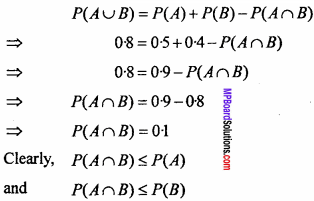
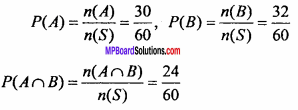

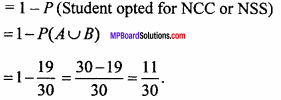
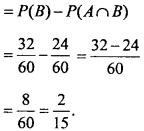
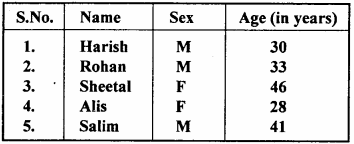
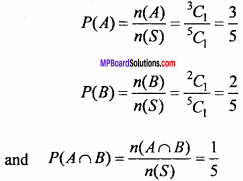





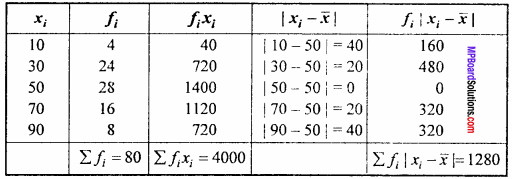

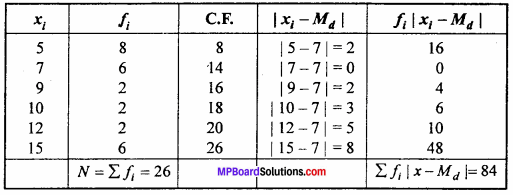

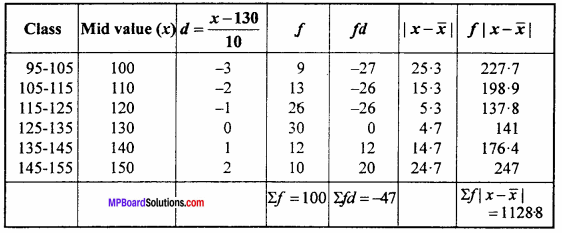

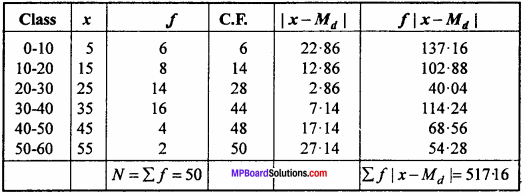
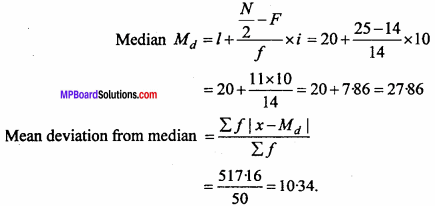

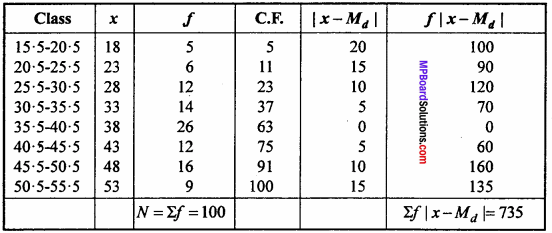
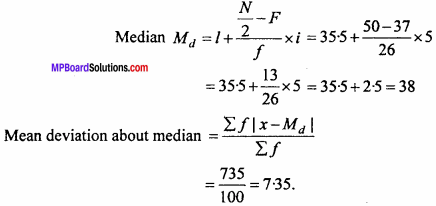

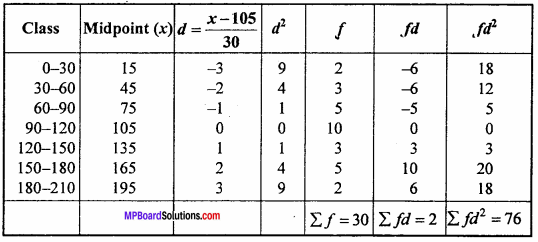
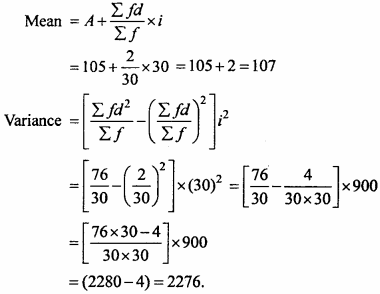

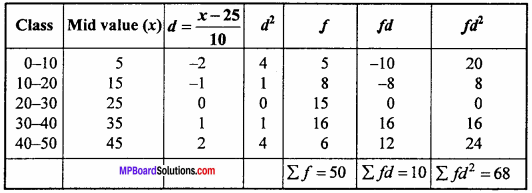
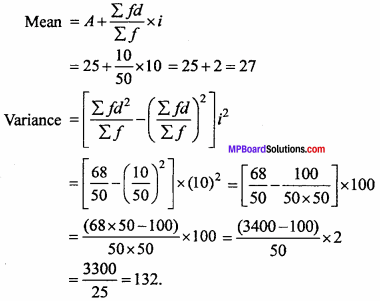

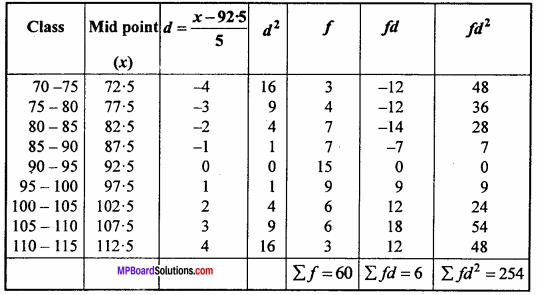
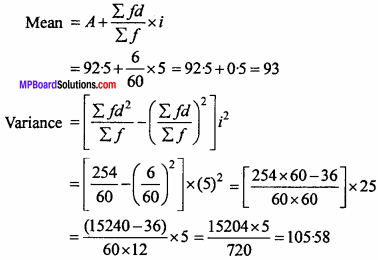

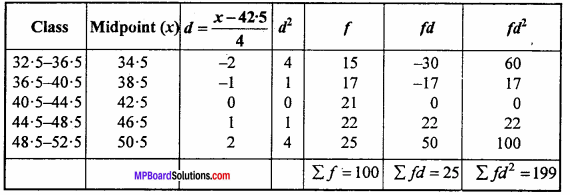
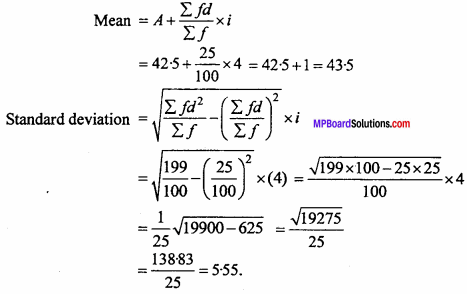

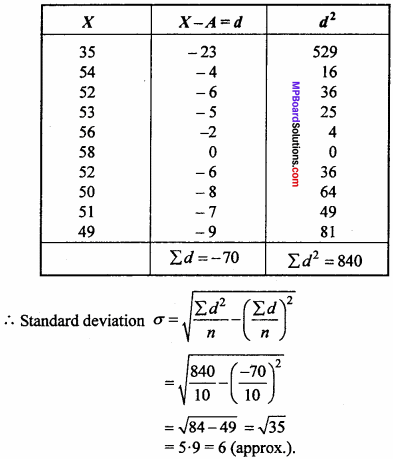
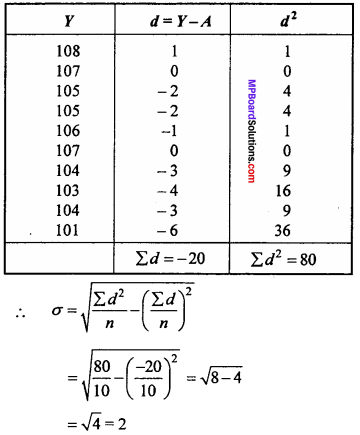


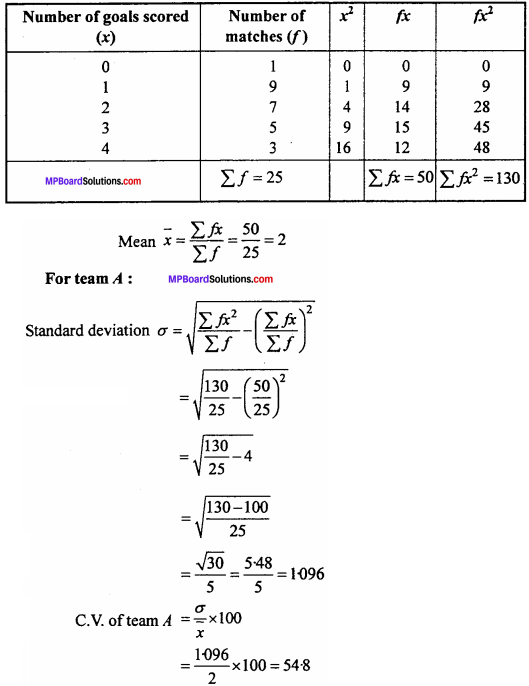
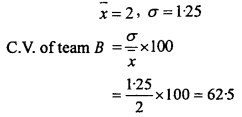

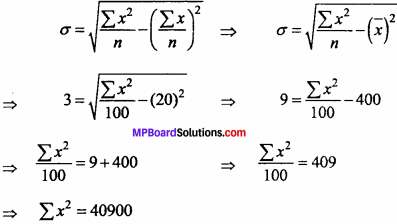
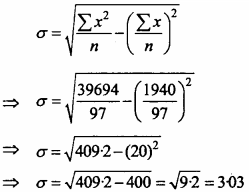

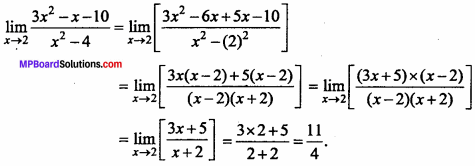
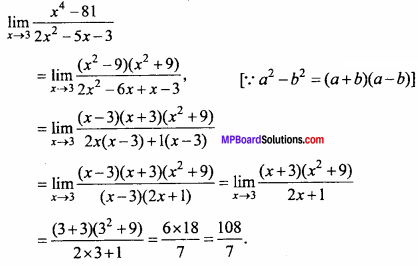
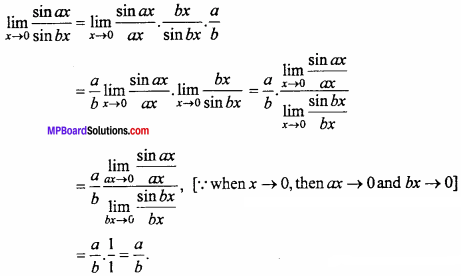

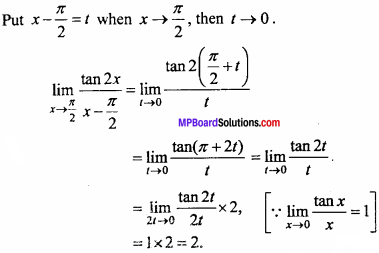
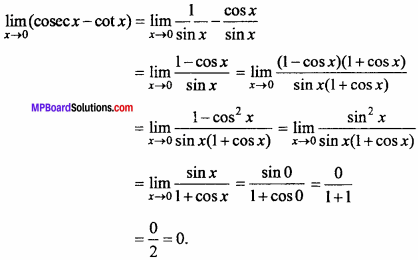
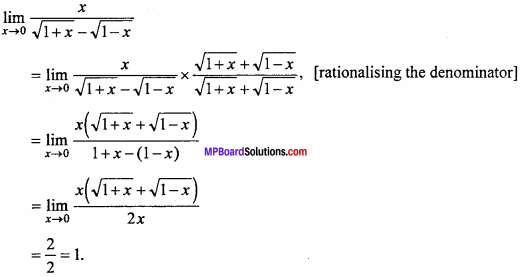
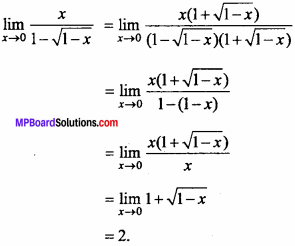

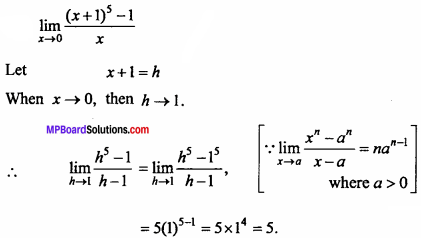
 = 405, then find the value of n.
= 405, then find the value of n.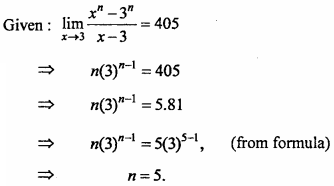
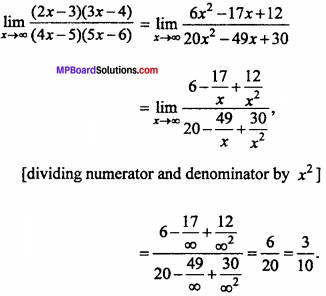
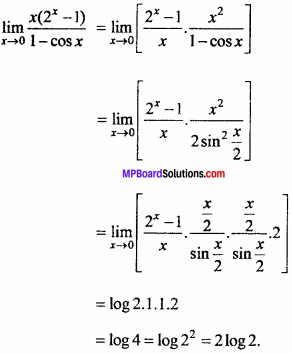
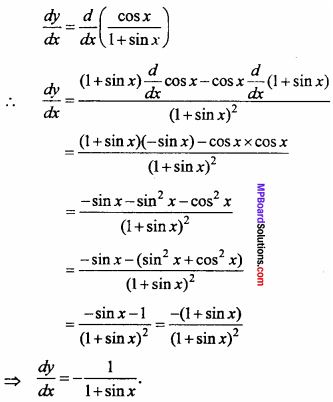
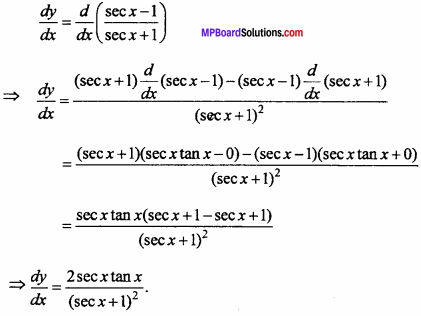
 , then find the value of a and b.
, then find the value of a and b.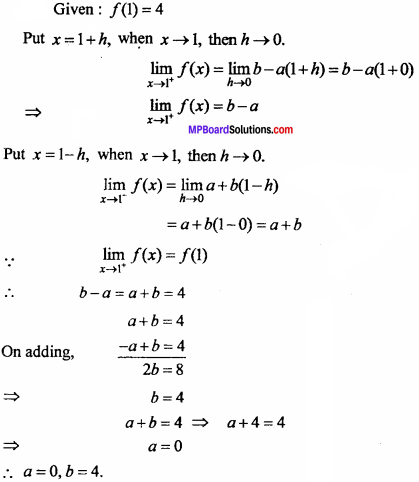

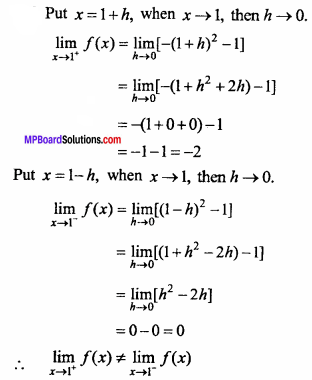
 and
and 